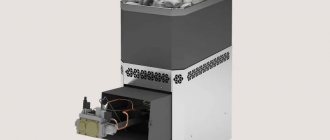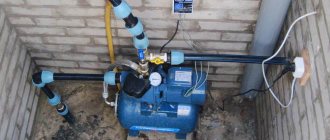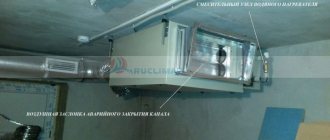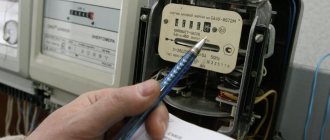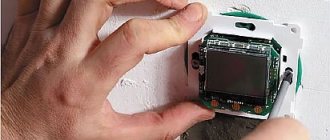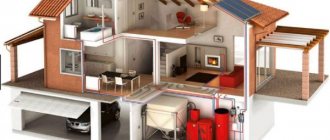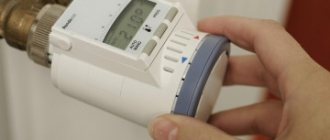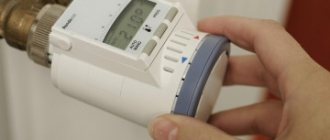Updated: 02/22/2021 12:51:39
Expert: Evgeny Mikhailovich Obolensky
*Review of the best according to the editors of expertology.ru. About the selection criteria. This material is subjective in nature, does not constitute advertising and does not serve as a purchase guide. Before purchasing, consultation with a specialist is required.
The quality of centralized heating does not always satisfy demanding residents. Sometimes you only need to create a warm environment for a short time, for example, during a weekend in the country or while repairing a car in the garage. Monolithic heaters can cope with these tasks. They combine stylish appearance, heating efficiency and an affordable price. There are a large number of domestic and foreign models on the Russian market. To choose the optimal development in terms of price and quality, you should listen to the recommendations of our experts.
What it is
An electric heater is especially relevant in dachas and country houses. Of course, it’s good when the house already has a stationary heating system. But an electric heater will help reduce the load on the existing heating system or, in emergency cases, replace it.
There are other options for heating the room:
- Oil heater;
- Fan heater.
But if you need a device that will:
- Safe;
- Easy;
- Compact;
- Quiet.
The most preferable option is a convector.
It is equipped with a reliable housing that covers the heating elements located inside. The air, passing through the lower special openings, is heated by heating elements.
According to the laws of physics, heated air goes up through the upper openings, heating the surrounding space, according to the principle of heat convection.
This is where it differs from devices that operate on the principle of radiating heat.
Structurally, the heater consists of:
- Housings
- Heating element.
Now it remains to find out which electric convector is better?
Design and principle of operation
An electric convector is a device that applies this principle of air convection. The air is heated by an electric heater and rises. After cooling, it falls down and again ends up in the heating block of the structure. This is the principle of its operation.
Operating principle of an electric convector
To prevent convection from stopping, there are air channels in the housing. Air is taken in and released through them. The operating principle of an electric convector may vary, since much depends on the fan (its presence or absence) and the heating element that is used.
As is already clear from the above, energy-saving electric heating convectors have a simple design. They consist of two main parts: the heating element and the housing. The holes that “draw in” cold air are located in the lower part of the case, and the hole at the top is designed to release warm air. There is a heating element located inside the lower part of the housing.
Electric convector device
This design and operating principle of the heater does not dry out the air. Unlike, for example, a fan heater.
Fan heaters quickly heat the air that passes through a hot spiral. This dries the air and evaporates moisture. They can be installed where you need to quickly warm up the space, but you should not install heaters of this type as the main source of heat.
We recommend our article Gas convector using bottled gas - user reviews, popular manufacturers
Electric convector structures can be placed anywhere, the only condition is the presence of an outlet. There is no need to assemble them; they are ready to use right away. Heaters are not hazardous to health and have many other benefits.
Electric heating convectors must not be covered (used as a dryer for clothes) or installed too close to an outlet (the distance must be at least 1 m)!
Electric convectors and their main types
This type of heating equipment operates from the electrical network. The main elements, besides the heating device itself, in these devices are ribbed elements surrounding the heating element itself.
But there are different designs of the entire convector.
How to install a convector:
- Wall;
- Floor-standing.
Air convection type:
- Natural;
- Forced.
By type of control:
- Mechanical;
- Electronic.
The devices also differ in the degree of moisture protection.
Floor and wall convectors
As we have already said, there are quite a few types of heaters, but the main difference between them is the type of installation - a wall-mounted convector or a mobile version.
Floor-standing devices have either special legs or wheels. Such mobile devices are very convenient. They are light in weight. Therefore, floor heating elements can be easily moved to any corner of the room. For example, move it from the wall closer to the sofa or place it near the window.
Wall-mounted models have a more conservative application. Using special fasteners, the convector is installed permanently on the wall. The weight of convectors is very small and therefore even simple brackets for wall mounting are very reliable and safe.
As a matter of fact, most manufacturers already supply various types of fastenings with the device in advance. The user can independently change the type of fastening at any time.
Convectors built into the floor
You can choose a concealed electric convector.
This is a more complex design of heaters, with the possibility of hidden installation in floors. In some cases, such placement is quite justified:
- Such a thermal curtain will work well in doorways.
- Under panoramic windows.
- In a children's room where the presence of open heating elements is undesirable.
Such heaters are placed in special niches in the floor, where electrical wiring has already been installed. The heater is closed from above with a decorative grille, which does not interfere with the passage of heated air.
Waterproof convection heaters
If additional heating of a bathroom or shower is required, a heating device that is specifically designed for installation in rooms with a humid climate is suitable.
On such devices there is a special mark - “Protection from moisture”. Such heaters can be safely placed in shower rooms or basements where there is high humidity.
Finally, we would like to add that using conventional electric convectors that are not protected from moisture is highly undesirable. Water and water vapor are almost guaranteed to cause damage to your heating device.
Electronic and mechanical control
For ease of use of heating equipment, the temperature in the room must be adjusted. This can be done using temperature regulators on the heater itself.
The choice of convector is unlimited. There are models with both mechanical and electronic control of the heating element.
Mechanical devices are regulated by built-in thermostats with bimetallic plates. By setting the desired temperature on the regulator, you thereby control the contact groups that are connected to the heating element.
Such heaters have one important advantage - the simplicity of the control design. But it is also a minus. Manual control reduces the efficiency of such heaters.
Electronic sensors continuously monitor the temperature. Precise electronics sets the temperature of the heating elements with an error of 0.5–10 °C. Of course, such models are more expensive than their mechanical counterparts, but the energy savings reach 5–10%!
In addition, such heaters have the ability to:
- work on a timer;
- programming modes;
- displaying the current temperature.
With natural and artificial convection
Another sign by which the designs of electric convectors differ is the movement of warm air inside the heater.
The natural movement of air, as we all know, is that cold air heats up and goes up. This is the natural type of convection inside the heater. Almost all models of electric convectors operate on this principle. This perfectly helps warm the air in rooms with a ceiling height of up to three meters.
If the interior space of the room is expanded due to higher ceilings, such models will also heat the air, but it will take much longer to warm up. The solution is to install a fan that will forcibly increase convection inside the device. The result is a reduction in the time it takes to warm up the room. By the way, if the room has warmed up enough, the fan can be turned off. Further temperature will be maintained due to natural heat exchange.
Tubular type heating elements
The tubular heater is made of nichrome thread integrated into a quartz tube with steel. In addition, the design includes a magnesium backfill with aluminum fins attached to it. The fins perform the functions of a heat exchange element.
Most often, the shape and distribution of the fin plates is specific to each company, but this does not affect the function of the fins. The advanced design of such an aluminum diffuser allows for intense heat transfer from the heating element to the air masses and makes the convection process more efficient.
The intensity of these elements is much lower than that of needle elements, but they are more unpretentious and reliable.
For the most part, heaters with tubular heating elements are protected from moisture penetration, which allows them to be installed in the bathroom. Despite this, it is not recommended to install the device closer than 1 meter from a water source.
Equipment power
When choosing a heater, let's not forget about its power. Of course, extra power never hurts. On the other hand, if the convector is planned to be used in addition to existing heating systems, why overpay for the excess power reserve.
| Convector power, W | Room area, m² |
| 1000 | 10 |
| 1200 | 12 |
| 1500 | 15 |
| 2000 | 20 |
| 2500 | 25 |
If you need to add heat to an apartment with an existing water or steam heating system, then it is wiser to use a heater of reduced power. It is recommended to use the following formula: per 10 m² of room area, 0.5 kW of thermal energy is required. Then both the heater and the room batteries will work as if in pairs, complementing each other. On sale, the power of convectors starts from 750 W.
What if there is no central heating?
Let's also look at the formula. Only now 10 m² requires 1 kW of thermal energy. But it is also necessary to provide for possible heat loss from window and door openings. That is, you need a power reserve of 10–20%.
It will not hurt if you take into account factors such as:
- Number of windows in the house. It's easier here. One heater is required per window.
- What type of room - corner or adjacent?
- Whether or not there are basements below.
- Are the external walls insulated or not?
If you have to choose a heater for your dacha, you need to know exactly which model of such convectors will heat the air space in the room faster and better.
And another important point. It would be a good idea to remind you about safety precautions. It is necessary to take into account the degree of wear and tear of the electrical wiring in the house. Convectors that are too powerful can cause overheating of the wires. And this will lead to either a short circuit or a fire!
If you are not sure of your calculations, it is better to seek help from specialists.
Monolithic heating elements
Monolithic heating elements are used for convectors with a degree of protection IP 24. They contain a nichrome filament filled with dielectric material. All the “filling” is packaged in a cast aluminum case with metal ribs.
During heating and cooling, each part of the monoblock increases and contracts in volume. This feature allows you to avoid friction and the development of microcracks. A good monolithic convector is silent, very reliable and durable. The monolithic body minimizes intermediate heat loss and also reduces heating of the fin structure.
Monolithic type heater
Types of heating elements for electric heaters
In order to make the right choice of electric convector, you need to familiarize yourself with the features of the heating elements used in them.
They can be in different designs and from different materials. Accordingly, its durability, energy efficiency and heat transfer depend on the type of heating element, operating principle and its technical characteristics.
Heating elements used in electric convectors can be divided into two groups:
- Open type.
- Closed type.
Open type devices are characterized by temperature control using a mechanical thermostat with an IP21 energy protection class.
Closed-type devices are usually equipped with electronic thermostats. With their help, it is possible to program the desired temperature in the room. Such devices are characterized by more economical power consumption with an increased protection class to IP24.
Stitch
Stitch is a type of needle heating element. Structurally, the heating element consists of dielectric platinum, and a conductive nickel-chromium filament runs along it on both sides. Such wire forms many needle-shaped loops on both sides of the dielectric.
Such heating convectors almost instantly heat up to 250 °C, although, on the other hand, they cool down just as quickly.
Perhaps quick heating is the only advantage of this design for a summer house. But the fact that the hot wire begins to spark during operation and, moreover, its service life is very short - this is a significant drawback of such structures.
Tubular
We are more familiar with tubular heating elements. A high-strength steel tube is filled with fine-grained quartz sand. A nichrome thread is passed inside the tube. To increase heat transfer, flat aluminum plates are usually welded along the edges of the tube.
Heating of the tube does not occur as quickly as with a needle heating element, since it takes time for the hot nichrome to transfer heat to the filler, which in turn heats the finned steel tube.
But now the filament itself is isolated from moisture and oxygen, which already allows the device to be used in damp rooms. And the service life increases 1.5 times.
Although in this device, due to the loose connection of the heating element with the finning fragments, significant heat losses occur. And this cannot in any way have a positive effect on reducing energy consumption.
Monolithic
Monolithic designs are the best and practically do not have the disadvantages of needle and tubular type heaters. Now the filament is located inside a solid X-shaped structure made of fast-heating silumin. The filament is well protected from environmental influences and is surrounded by a filler of fine-grained quartz sand.
Since the wire is reliably insulated from environmental influences, and the heating element itself has a monolithic design, such home heaters have practically no restrictions in their use for heating residential premises.
Types of heating elements
An electric convector (there are also gas and water) is the most popular heating device on the market today. It has earned its reputation not only for its ease of use, but also for its reliability. This equipment can provide comfortable conditions both in the living room and in public areas. Experts consider the main feature of the design to be the absence of intermediaries for heat transfer.
A modern convector uses one of three types of heating elements . He can be:
- needle-shaped, ribbon-shaped, stick-type heater;
- a tubular-type electric heater with aluminum fins, abbreviated as heating elements;
- monolithic type.
Each type has its own characteristics and disadvantages. The decision about which one to choose must be made based on the characteristics of the heated room.
Self-repair of electric convector
While the heating device for the apartment is working, we practically do not notice it. It works and complements the central heating perfectly. What if the next time you plug the device into the network, it shows no signs of life? Broken? Burnt out? It is clear that the fault is hidden inside the device. Should I call a repairman or take it to a workshop?
But you will always have time. Most likely, the cause of the “disease” is very simple, so it is quite possible to repair the convector with your own hands.
Checking internal connections
First, let's try to read the operating instructions for electric convectors again. You can find a lot of interesting things there. For example, the manufacturer provides a detailed diagram of the heater in the instructions. It won't hurt to get acquainted with it. In most cases, the design of a convector is so elementary that you can understand it without special education.
Let's try pressing the power button first.
Did not help? Go ahead.
We disassemble the outer heater panel to see the insides. We carefully inspect the condition of the current-carrying wires in the convector - there should be either traces of melting or loosening of the clamping nuts or screws. If such a screw (nut) is found, it needs to be tightened. You can see traces of scale where the wire is connected. These places must be thoroughly cleaned with sandpaper.
Thermal limiter
Now it is advisable to acquire a simple tester or electrical probe.
We check the functionality of the thermostat. In normal condition, the regulator contacts are always closed. If this is not the case, clean the conductive contacts with fine sandpaper and degrease with gasoline.
It is advisable to carry out the cleaning operation extremely carefully so as not to damage the bimetallic strip.
Checking the switches
In more complex designs, in addition to the thermostat, there are other control keys. It doesn’t hurt to check their performance. Set the device power key to the “On” position. And with a tester in the “Ring” mode we check the conductivity of each switch.
If an open circuit of the electric convector is detected, you can try to clean the contacts of the switch.
Did not help? We replace the entire control unit completely.
Heating elements
If the power buttons work, the control unit is working, the power cord is intact, only one thing remains - the heating element.
There is a possibility that the contact group areas have oxidized. You can try to clean the contact group, put everything back tightly in place and check. But…
It will most likely not be possible to repair the heating element itself. Most often it needs to be replaced.
Where to install the convector?
It is recommended to install electric convectors permanently, under a window (like central heating batteries), thus creating a thermal curtain. It is desirable that the convector completely covers the window opening. The convector is hung on the wall at a height of 8-12 cm from the floor. There should be 12-15 cm from the top edge of the convector to the window sill. In bathrooms, showers, etc. the convector must be located so that the controls are inaccessible to the person taking a shower or bath. The socket into which the convector is connected must not be placed above the heating device.
If it is not possible to install the convector under a window, you can hang it in any other place. Convectors intended for mobile installation are equipped with legs or roller wheels, and also, without fail, a tipping sensor. Please note: some convector models cannot be installed on legs or rollers!
TOP 5 best electric convectors
Now let's look at what are the best convectors offered by modern industry.
The review presents a rating of 5 models. They are approximately equal in basic technical parameters.
NeoClima Fast 2000
1 199 ₱
If you choose an inexpensive but reliable device, then NeoClima Fast 2000 is just for you.
The device is connected to an alternating current network of 220V with energy consumption up to 2000 W/hour.
This power is optimal for rooms up to 20 m².
Two heating elements with low inertia and high heat transfer make it possible to quickly warm up the room.
The installed mechanical regulator controls three power levels up to a lower limit of 750 W. There is an overheating protection system with automatic shutdown of the convector.
Due to the built-in anti-freeze system, it can be used in basements.
The light weight of the device - 2 kg - makes it easy to move the device from one place to another.
Timberk TEC.E3 M 2000
from 3,240 to 6,385 ₱
Our rating continues with the safe heater Timberk TEC.E3 M 2000. A good substitute for central heating during seasonal preventive shutdowns of central heating.
It heats up the room quickly. Doesn't make noise when heating up. The set includes legs for floor positioning and dowels for wall mounting.
A room of 16 m² begins to warm up 2 minutes after switching on. A comfortable room temperature of +25° is achieved quite quickly - in 25 minutes.
The thermal relay allows you to select several options (out of three) operating modes.
It is worth considering the quality of the metal of the case - it is quite soft, but at the same time, in addition to floor placement, it also has the ability to be wall mounted.
Noirot Spot E-3 Plus 1500
10 890₱
Yes, the price of the device has increased. But it's justified. The device is also included in the rating of the best heating heaters, because the heating of the room is arranged in such a way that the heat distribution occurs very evenly.
And at the same time, the Spot E-3 Plus 1500 model is a very economical heater. It contains an electronic digital ASIC® thermostat with the ability to maintain a given temperature with an accuracy of 0.1 °C. Due to such precise adjustment of the temperature balance, significant savings occur in energy resources. And this, in turn, has a positive effect on increasing the service life of the device with the highest possible level of comfort in the room without sudden changes in temperature.
The device is universal and at the same time low noise. Can be installed on the floor or hung on a bracket to the wall.
If you have doubts about which convector to choose, think about Noirot. There are no sharp corners on which children can get hurt and, importantly, they can’t get burned on it either. The maximum temperature of the outer walls does not exceed 600C.
There are three operating modes:
- heating;
- cooling;
- drainage.
The heater has built-in electronic automation with protection against sudden voltage changes (from 150 V to 242 V). If there is a sudden power outage, there is an automatic restart function.
The device is intended for domestic use, so a special connection to an electrical network with grounding is not required. At the same time, it has class 2 electrical protection, which allows uninterrupted operation 24 hours a day!
When purchasing, there is no doubt about which company to buy the heater from. Manufacturer: France and this already says a lot.
Ballu BEC/EZER-1500
4 511 ₱
In order to make sure which convector is better, we continue our rating of home heaters. Here is the electric convector Ballu Enzo BEC/EZER-1500.
This is also a floor-wall modification. Electronic heating control with a high-precision thermostat is one of the main advantages of this heater. High energy efficiency is achieved through the built-in Homogeneous flow system with Intake air intakes.
There is a function - parental control, supplemented by a sleep timer. There is also an Auto Restart function that automatically turns on the device if there is a sudden power outage. All current settings are retained after disconnection.
An accurate thermostat allows you to economically and efficiently heat a room up to 20 m².
There are also “goodies” from the Ballu concern:
- Moisture protection.
- Overheat protection.
- Light indication.
- Heater control blocking.
- Flip sensor.
- Ionizer
- Built-in timer.
If the room temperature exceeds 20 °C, the device will not turn on at full load. Therefore, this model can be installed as an additional heat source.
Electrolux ECH/AS-2000 MR
6 290₱
And the Russian Electrolux ECH/AS-2000 MR closes our rating of electric convectors.
Perhaps this is the best balance between price and quality.
Electrolux is equipped with an X-shaped monolithic heating element with a power of 2000 W, which allows the convector to instantly heat a room of up to 25 m². What oil radiators cannot boast of.
It is easy to control - there is a built-in mechanical thermostat that allows you to select the heating level of 1000 or 2000 W.
It is safe to use as it has built-in tip-over protection. And the built-in three-stage dust filter does a good job of cleaning and ionizing the air.
For floor use it is equipped with plastic wheels, although it is possible to mount it permanently on a wall.
In terms of moisture protection, it is suitable for placement in bathrooms.
Rating of the best monolithic heaters
| Nomination | place | Name of product | price |
| The best monolithic convector heaters | 1 | Electrolux ECH/R-2500 T | 4 690 ₽ |
| 2 | Nobo NTE4S 12 | 9 257 ₽ | |
| 3 | Ballu BEC/EVU-2000 | 3 072 ₽ | |
| 4 | Timberk TEC.E0X M 1500 | 2 196 ₽ | |
| 5 | Hyundai H-HV16-15-UI621 | 2 108 ₽ | |
| 6 | RESANTA OK-2000 | 2 860 ₽ | |
| The best monolithic infrared heaters | 1 | Hintek IW-03 | 2 335 ₽ |
| 2 | Noirot Verplus 1500 | 83 900 ₽ |
Which type of thermostat should I choose - electronic or mechanical?
Convectors are equipped with two types of thermostats: mechanical and electronic. The name of the thermostat reveals the principle of temperature measurement. In the case of a mechanical thermostat, a capillary air thermostat is used to measure the room temperature. An electronic thermostat uses a microcontroller and a thermal resistance to measure temperature. For the end user, this information is not so necessary; other differences are more important: an electronic thermostat is more accurate than a mechanical one (measurement accuracy is 0.1-0.3 C versus 1-2 C for a mechanical one) and the convector with an electronic thermostat operates silently. A special feature of convectors with a mechanical thermostat is a characteristic “click” when the convector turns the heating on and off. However, convectors with “mechanics” are cheaper and, so to speak, more “oaky”. At the same time, the accuracy of electronic thermostats allows you to save an additional 5-7% of electricity.
The controls for convectors with “mechanics” and “electronics” may not differ. For European manufacturers, this is usually a rotating knob or a moving slider for setting the temperature, as well as an operating mode switch (if there is one).
If you see a convector with an LCD screen, a remote control, power switching, some kind of “ionizers” and other “whistles and tricks” - 99% that this is a Chinese-made product.
- Electrical
- About heating household pipes
- About building heating
- About heated floors
- About electric heaters
Wall or floor convector?
First you need to decide how you intend to use the electric convector. As a rule, convectors are installed permanently on a wall, under a window, on a special bracket (included in the kit). All convectors of European brands (NOBO, Noirot, Atlantic) are designed for wall mounting by default. If you want to get a mobile heater that can be moved around the room, you will need to additionally purchase a set of legs (for wall-mounted convectors sold separately). Some convector models are immediately equipped with legs/rollers for mobile installation and a bracket for wall installation.
